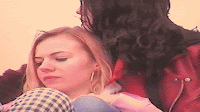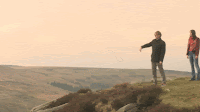Friday, 29 April 2016
CPDR progress evaluation
I feel I’ve
made great progress with filmmaking throughout the module. The sound piece and
films I have made in the module taught me a lot about the technical and
creative side narrative and documentary filmmaking.
The first sound piece taught me a lot about creating a space through sound. I hadn’t had much experience with sound design, so this taught me a great deal. For example, using different microphones for different recordings, and layering sounds.
The first sound piece taught me a lot about creating a space through sound. I hadn’t had much experience with sound design, so this taught me a great deal. For example, using different microphones for different recordings, and layering sounds.
Then
turning this into a film proved a challenge connecting the visual side. It was
difficult building a narrative from what had been quite an abstract sound
piece. We ended up making quite a minimalist film ‘Down’. Making the film allowed
me to experiment creatively with how to visualise the sound. We blended
multiple loud uncomfortable sounds from public spaces, then contrasted these
with the quiet of the lift. We visualised the loud busy urban environment by
using fast cutting, handheld camerawork, lens whacking and shooting through
glass/reflections to create an anxious and rushed aesthetic, characterising our
protagonist who appeared lost in her environment. In contrast, we used longer
takes, steadier camerawork and fades in the lift to convey more stability.
Making the
documentary was especially challenging. Finding a topic for a documentary was
the hardest part, but we soon came up with multiple ideas. We were especially
lucky when we decided to make a documentary about Thrifty store, as we did not
know about the building it was situated in and their plans to grow into it. The
store owner, Bally, was a good character and was happy talking and appearing on
camera. We decided to use two different styles of documentary filmmaking to
tackle both the shop and the abandoned areas of the building. In the shop, we
conducted quite formal sat down interviews, talked to workers and filmed quite
candidly. In the rest of the building however, we used a shoulder cam and
camera light to film Bally walking around the building, talking to the camera
about his plans for the area. This we cut with static cutaways of different
details and communicating the size of the place. Shooting the documentary was a
new experience for me. It taught me a lot about how to conduct interviews,
asking open questions and researching the background of the place to tell its
story. I also learnt a lot from tackling different challenges such as filming
long interview tours around a large snaking building.
Shooting the film also taught me a lot about organising shoots with actors and difficult
locations. At first, shooting on a moor seemed too difficult a task to realise.
Transporting Actors and equipment and keeping them fed and dry could be too
difficult on no budget. However, we picked a perfect location near a pub and
bus route, and watched the weather forecast for the best day to shoot.
Thursday, 28 April 2016
Drama Evaluation
I think the
finished film Scarlet Heath is a
success, and I’m happy with how it turned out. We took a chance with how we
told the story, such as shooting on tape, zooming out from the tape (which told
a great deal of the story) and using little dialogue. Although this makes the
story much harder to follow, I like how subtle it is. It isn’t necessary to
know the characters names and backstory, but instead see the situation they are
in.
Writing the
script was hard as we had some parts pure cinema (without dialogue) and others with
heavy dialogue, which was hard to make sound serious as it was an argument. We
decided to write as close to realistic as we could, and improvise slightly off
of what we had written on the day.
A difficulty of shooting was shooting on tape. The camera was at least 15 years old and had to be tested if it worked. I had to learn how to use it days before shooting and buy backup tapes. Because in Josh plays the tape direct from the camera in the first scene, we had to shoot all of the tape scenes back to back in chronological order as we planned not to edit it. If it didn’t work we planned to edit it and make it look like it was playing off the camera, but thankfully everything went to plan, allowing us to film using the footage the next day on the screen.
A difficulty of shooting was shooting on tape. The camera was at least 15 years old and had to be tested if it worked. I had to learn how to use it days before shooting and buy backup tapes. Because in Josh plays the tape direct from the camera in the first scene, we had to shoot all of the tape scenes back to back in chronological order as we planned not to edit it. If it didn’t work we planned to edit it and make it look like it was playing off the camera, but thankfully everything went to plan, allowing us to film using the footage the next day on the screen.
Another
issue with shooting on a diegetic tape camera was it could turn the film into a
found footage/POV film and not be taken seriously. However, this is fixed with
the smooth zoom out which contrasts the handheld aesthetic. Although the second
half has different cinematography to the tape, appearing more realistic through
static camerawork, we used slight jumps in the edit to suggest that this scene
also lacked realism, and could perhaps also be a film. The scene’s lack of
realism is communicated also by the ghostly disappearance and reappearance of
Madison and Alice.


Shooting
only lasted two days back to back, giving plenty of time to the edit. The first
day was the most difficult to organise, as it meant transporting the equipment
and actors to fox house on the peak district, which involved buses and taxis.
We chose this location as it was near a pub and on a popular bus route,
allowing us easy shelter, catering and transport. However, a short walk away
and we had the wilderness we needed for our film.
We took inspiration from multiple films visually and thematically, such as Gaspar Noé’s Irreversible and Love, Michael Haneke’s Caché and Code Unknown, Wong Kar Wai’s 2046 and Andrei Tarkovsky’s Mirror. We decided to use ideas such as the camera pulling out from a screen from Code Unknown and Love. The letting go of the tape was inspired by the freeing of the bird in Mirror, signalling death and freedom. Josh being haunted by previous lovers was inspired by 2046, a film containing being haunted by a previous lover.

Code Unknown (Haneke, 2000)
and Love (Noé, 2015)
Mirror (Tarkovsky, 1975)

Monday, 25 April 2016
Edit Progress
Editing was
quite easy due to us using long takes. The tape footage playing on the
television at the beginning had to be filmed in order so we could film it
directly from the camera plugged into the TV, meaning we did not have to edit
any of the tape footage. We colour graded the footage to be much warmer, giving
the ending a dramatic sunset colour and adding to the film’s red and yellow
colour scheme.
The most
difficult part to edit was the final scene. It was paced slowly and had no
dialogue, as well as telling a lot of the story. We cut out as much as we
could, going for less cuts and longer takes to focus on the performance and set
the pace. Initially we had hoped to reveal Madison as a hallucination by using
a two shot with her in and then not after cutting back, but we decided to cut
this and convey it more subtly. We experimented with different editing
techniques such as making the footage jump slightly during the ending scene, which
makes the viewer question the reality of the scene, making it more alike the
previous scene shot on tape which pauses and fastforwards. Feedback for the
rough edit was mostly positive and helpful, and looked at changed some cuts after
showing it.
Saturday, 23 April 2016
Script read through workshop approach
Due to our film containing large parts of pure cinema and
others with only loose dialogue which we hoped to improvise, doing a
readthrough is a hard task. The parts of pure cinema were also very static and
would be difficult to practice in a workshop. We planned to talk to the actors
about the characters they may play, and use them to help characterize them
further and assist the writing of more scripted dialogue for the moor argument
based off our current script, which to be effective must be well written and
performed realistically. This way we will have scripted dialogue for the shoot
to work off if the actors cannot improvise. We also have sections of our film
where a diegetic camera is used and potentially diegetic sound through the
camera’s microphone as if he were carrying it, meaning the actor playing Josh
would either have to move with the cameraman or be the cameraman. We hope to
test which works best in the workshop, and decide which approach works best.
Friday, 22 April 2016
Thursday, 21 April 2016
About A Girl (Brian Percival, 2001) 200 word response
About A Girl is a short realist drama about an English
working class girl and her difficult relationship with her family. The film
cuts between following the protagonist as she recounts parts of her life to the
audience, and flashbacks to different scenes in her life as she talks about
them. The use of tragic irony through these cuts, such as when she says her
father took her in the pub yet we see her sat alone outside, is emotive and makes
us sympathise with the protagonist.
The film
uses quick cutting, jump cuts and unsteady handheld camerawork to make the film
feel uncomfortable and rushed, and to give it a documentary aesthetic. In
contrast, slower editing and more steady camerawork is employed on moments of
revelation, such as the café scene with her father, and at the end where she
disposes of the baby in the canal. The clarity of these scenes suggests we are
seeing the objective truth, whilst the more subjective camerawork and girl’s rambling
monologue conveys a disorientated and unreliable protagonist, affected by her
surroundings and troubled family life. The protagonist’s singing is emotive and
expressive of her character, whilst still remaining diegetic in keeping with
the realist style.
Subscribe to:
Comments (Atom)



















